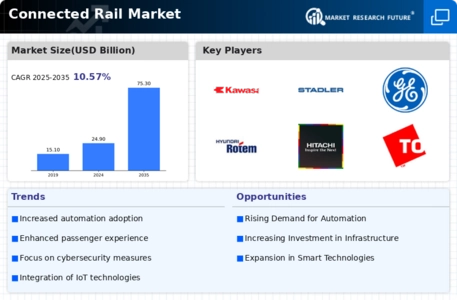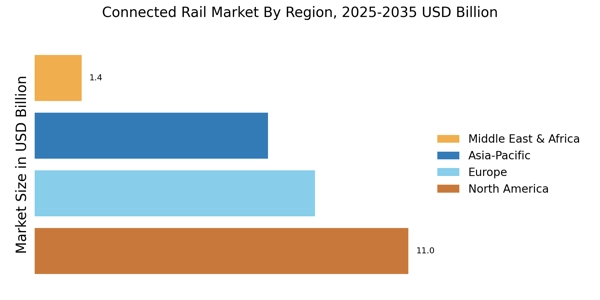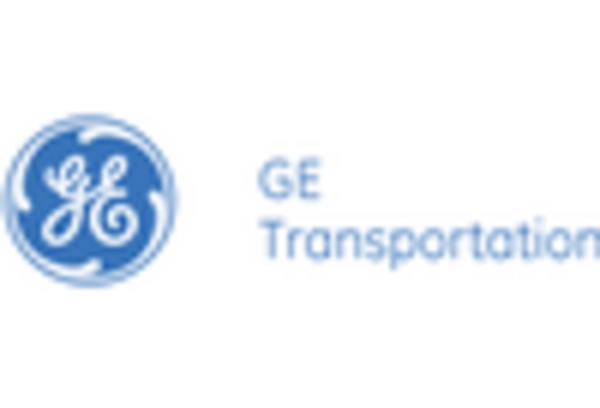The Connected Rail Market is currently characterized by a dynamic competitive landscape, driven by technological advancements and an increasing emphasis on sustainability. Major players such as Siemens (Germany), Alstom (France), and Thales (France) are at the forefront, each adopting distinct strategies to enhance their market positioning. Siemens (Germany) focuses on digital transformation and smart rail solutions, aiming to integrate IoT technologies into rail systems. Alstom (France) emphasizes sustainability through its commitment to green technologies, while Thales (France) leverages its expertise in cybersecurity to enhance rail safety and operational efficiency. Collectively, these strategies not only foster innovation but also intensify competition, as companies vie for leadership in a rapidly evolving market.
In terms of business tactics, companies are increasingly localizing manufacturing and optimizing supply chains to enhance operational efficiency. The Connected Rail Market appears moderately fragmented, with several key players exerting influence over various segments. This fragmentation allows for niche players to emerge, yet the collective strength of major companies like GE Transportation (United States) and Bombardier (Canada) remains significant, as they continue to innovate and expand their offerings.
In August 2025, Siemens (Germany) announced a strategic partnership with a leading technology firm to develop advanced predictive maintenance solutions for rail operators. This initiative is poised to enhance operational reliability and reduce downtime, reflecting Siemens' commitment to leveraging data analytics in rail operations. Such a move underscores the growing importance of predictive technologies in optimizing rail performance and safety.
In September 2025, Alstom (France) unveiled its new hydrogen-powered train prototype, marking a significant step towards sustainable rail transport. This development not only aligns with global decarbonization goals but also positions Alstom as a leader in green technology within the rail sector. The introduction of hydrogen trains could potentially reshape the market, as operators seek environmentally friendly alternatives to traditional diesel engines.
In October 2025, Thales (France) launched a new cybersecurity framework specifically designed for rail systems, addressing the increasing threats posed by cyberattacks. This initiative highlights Thales' strategic focus on enhancing the security of connected rail networks, which is becoming increasingly critical as digitalization accelerates. By prioritizing cybersecurity, Thales aims to build trust among rail operators and passengers alike, thereby strengthening its competitive edge.
As of October 2025, the Connected Rail Market is witnessing trends such as digitalization, sustainability, and the integration of artificial intelligence. Strategic alliances are becoming increasingly prevalent, as companies recognize the need to collaborate in order to innovate and meet evolving customer demands. Looking ahead, competitive differentiation is likely to shift from price-based strategies to a focus on technological innovation, reliability, and sustainable practices. This evolution suggests that companies that prioritize these aspects will be better positioned to thrive in the future.


















Leave a Comment